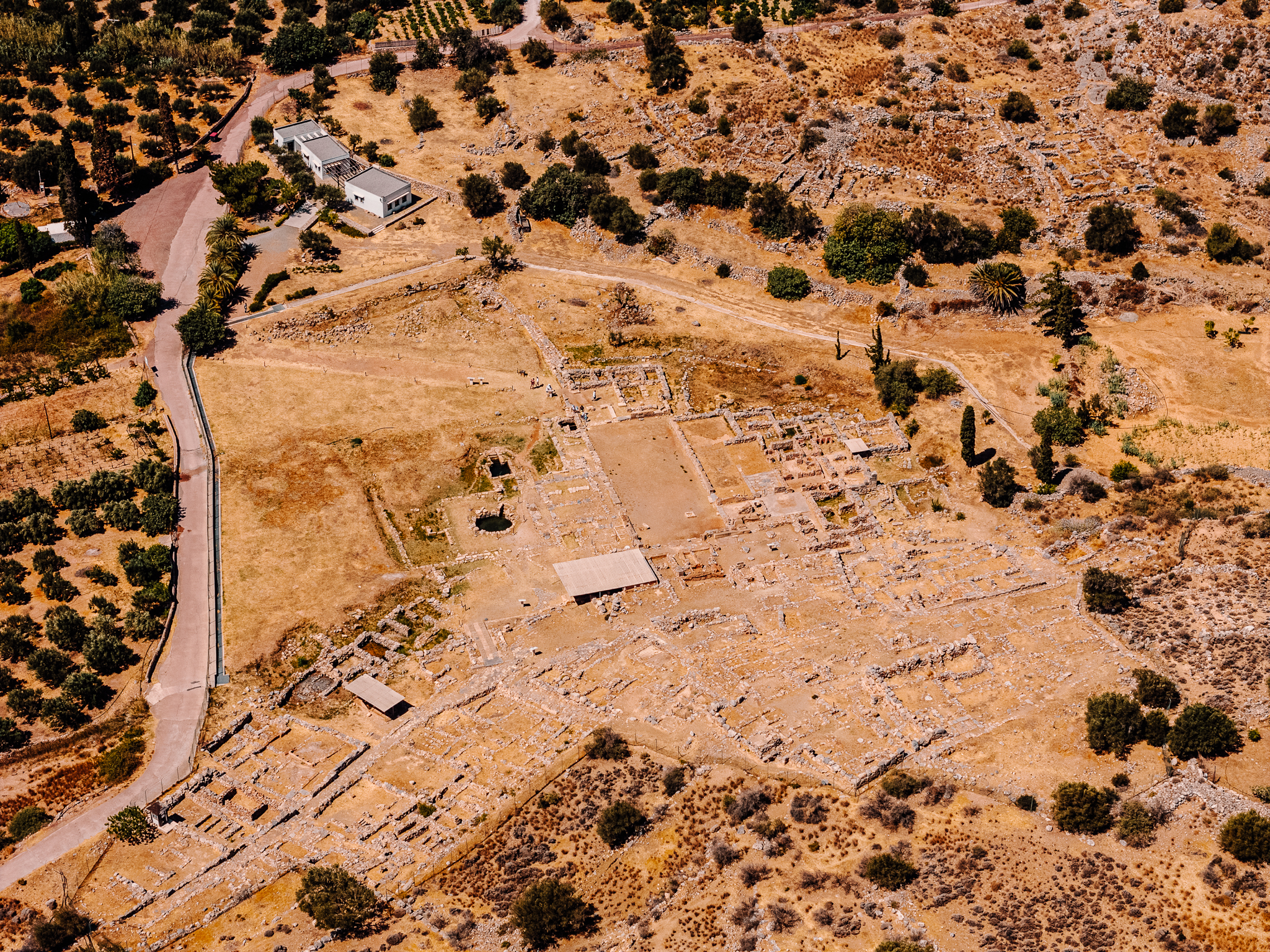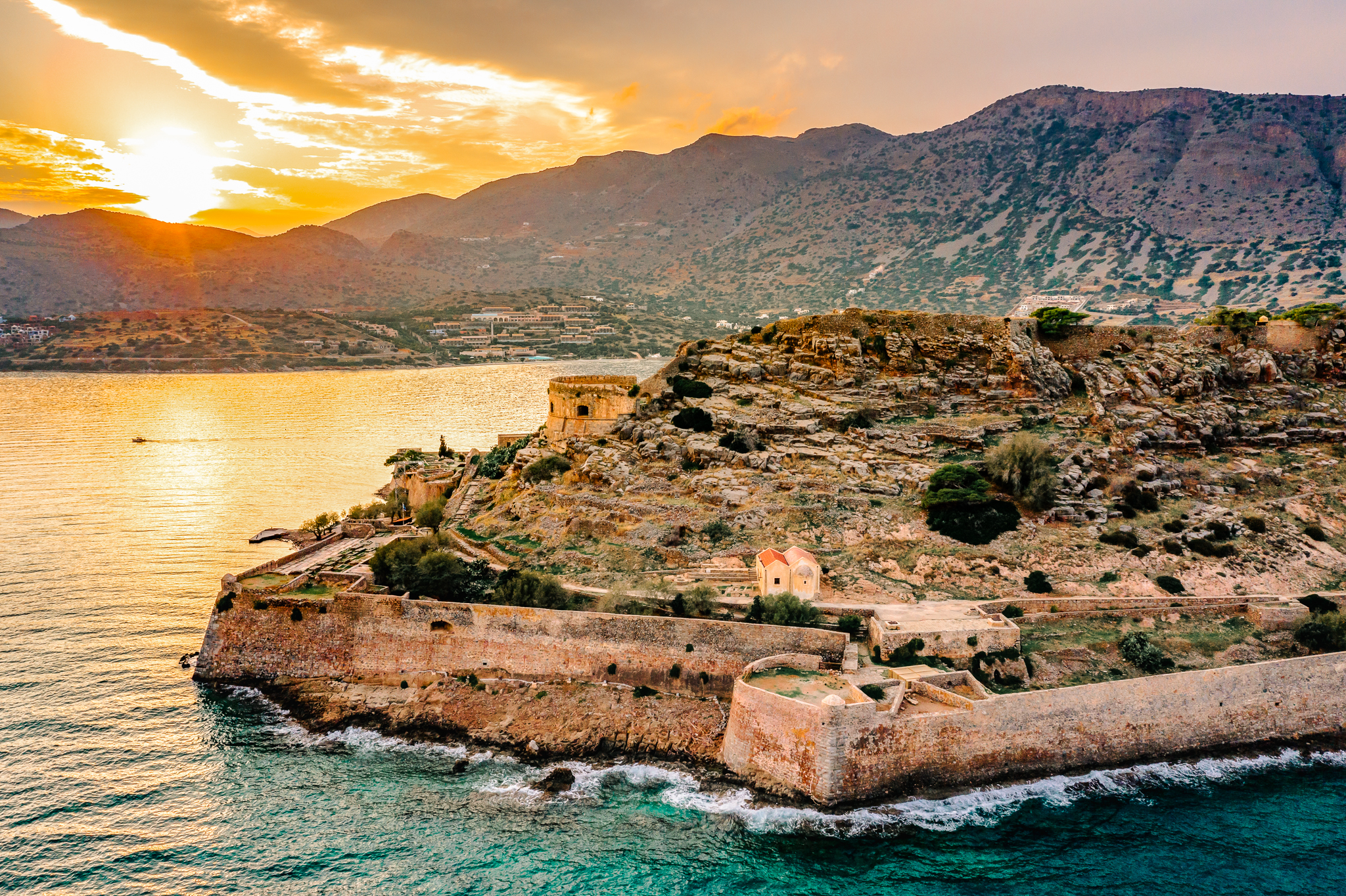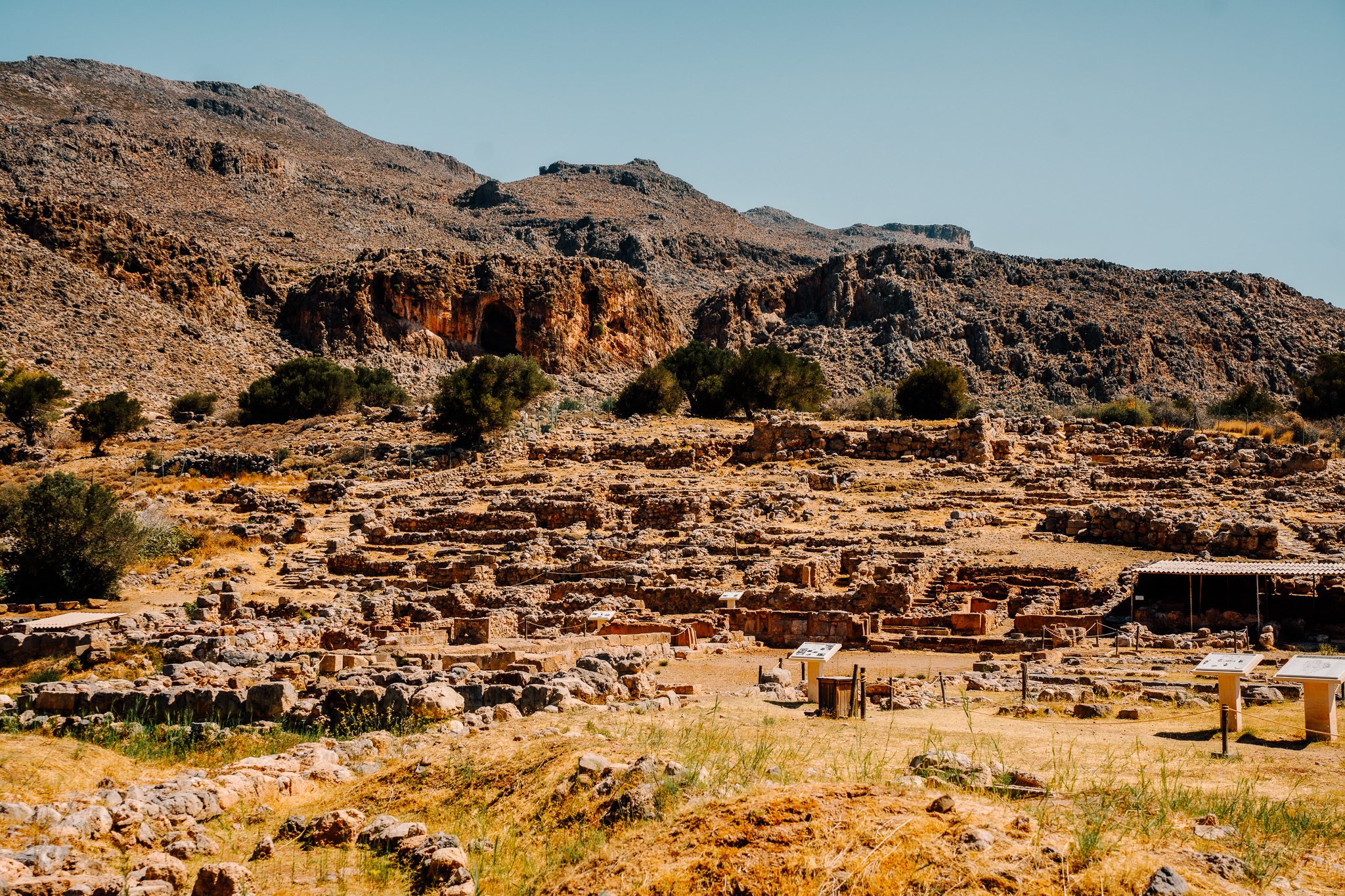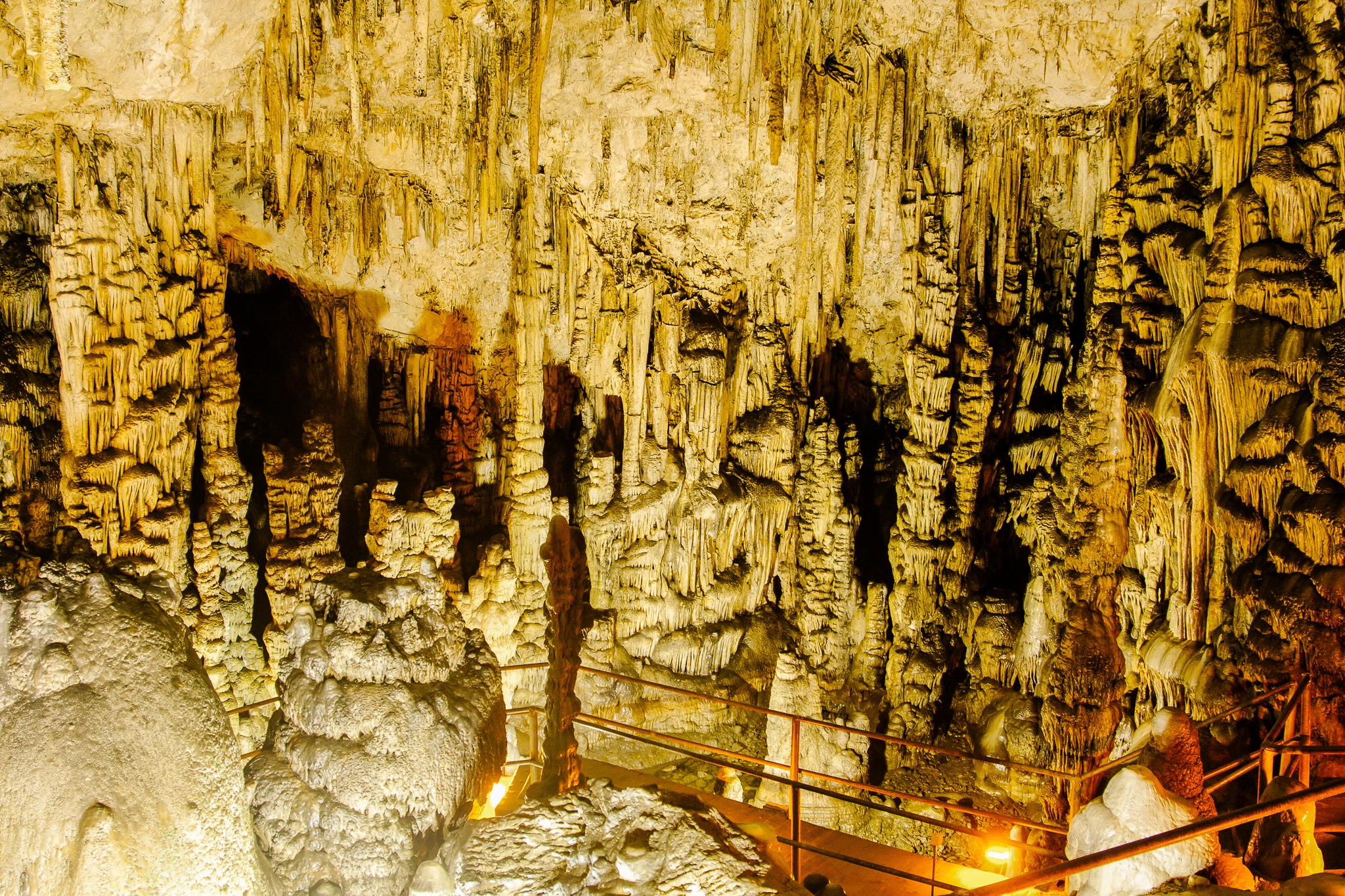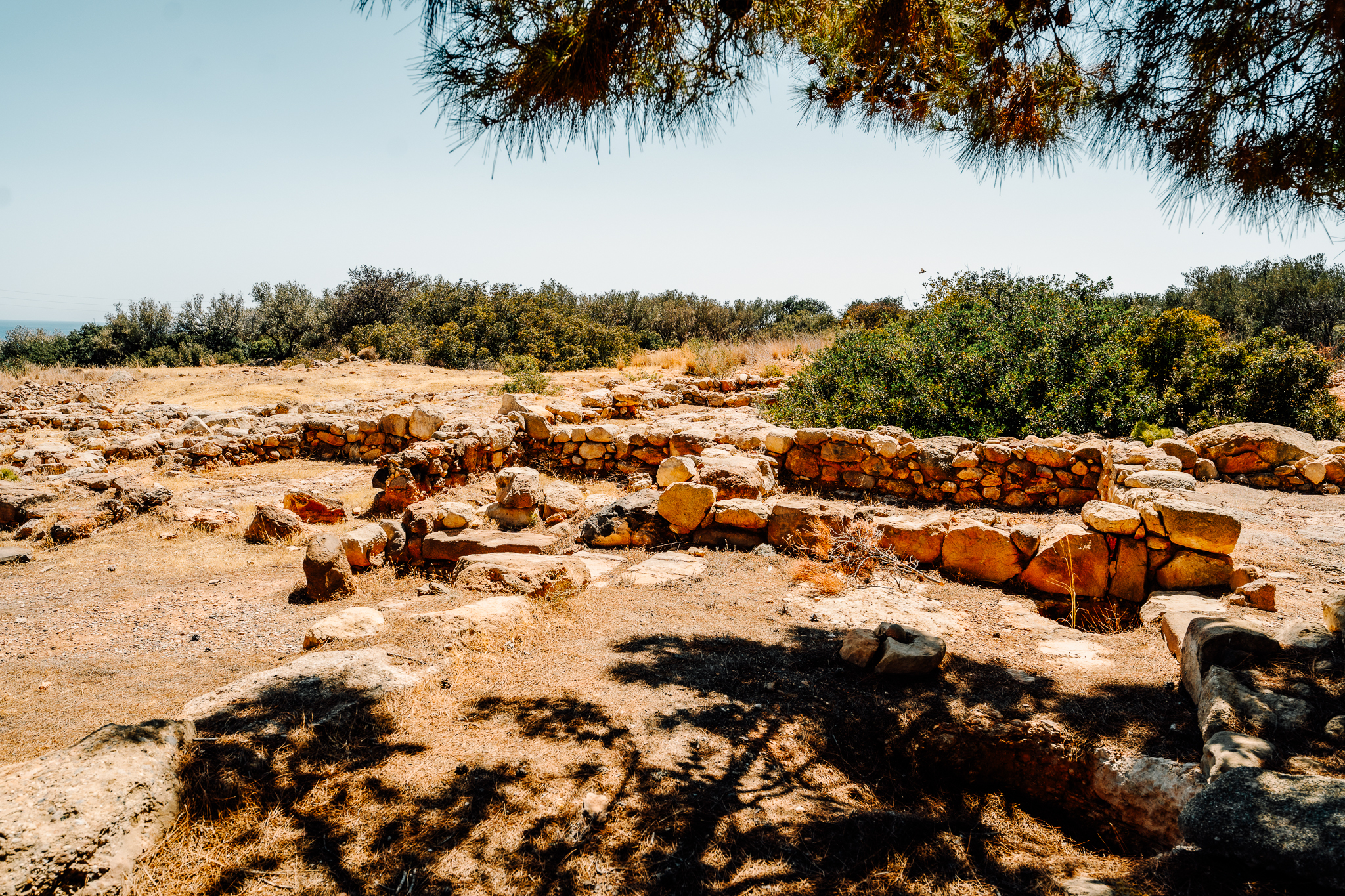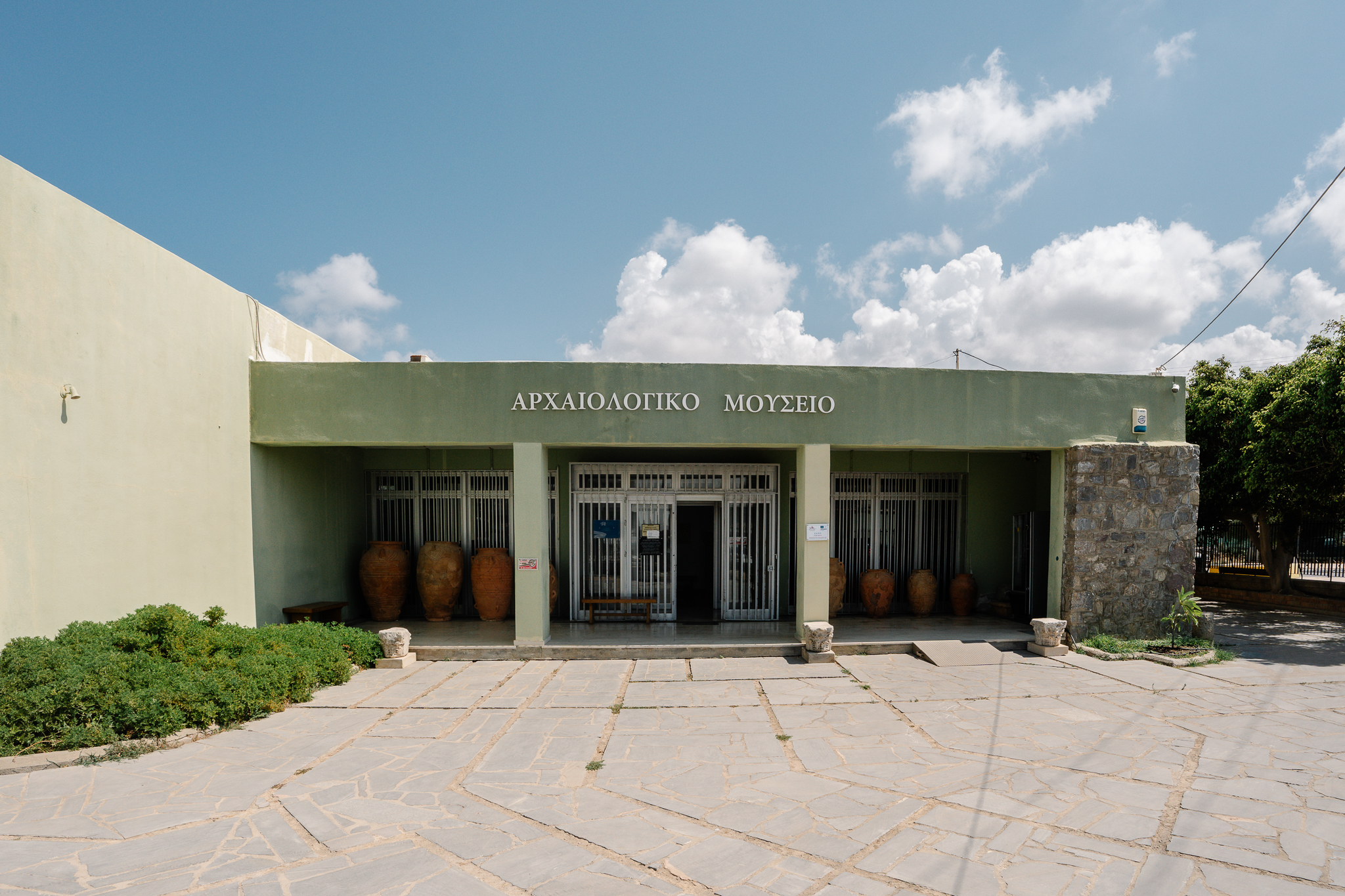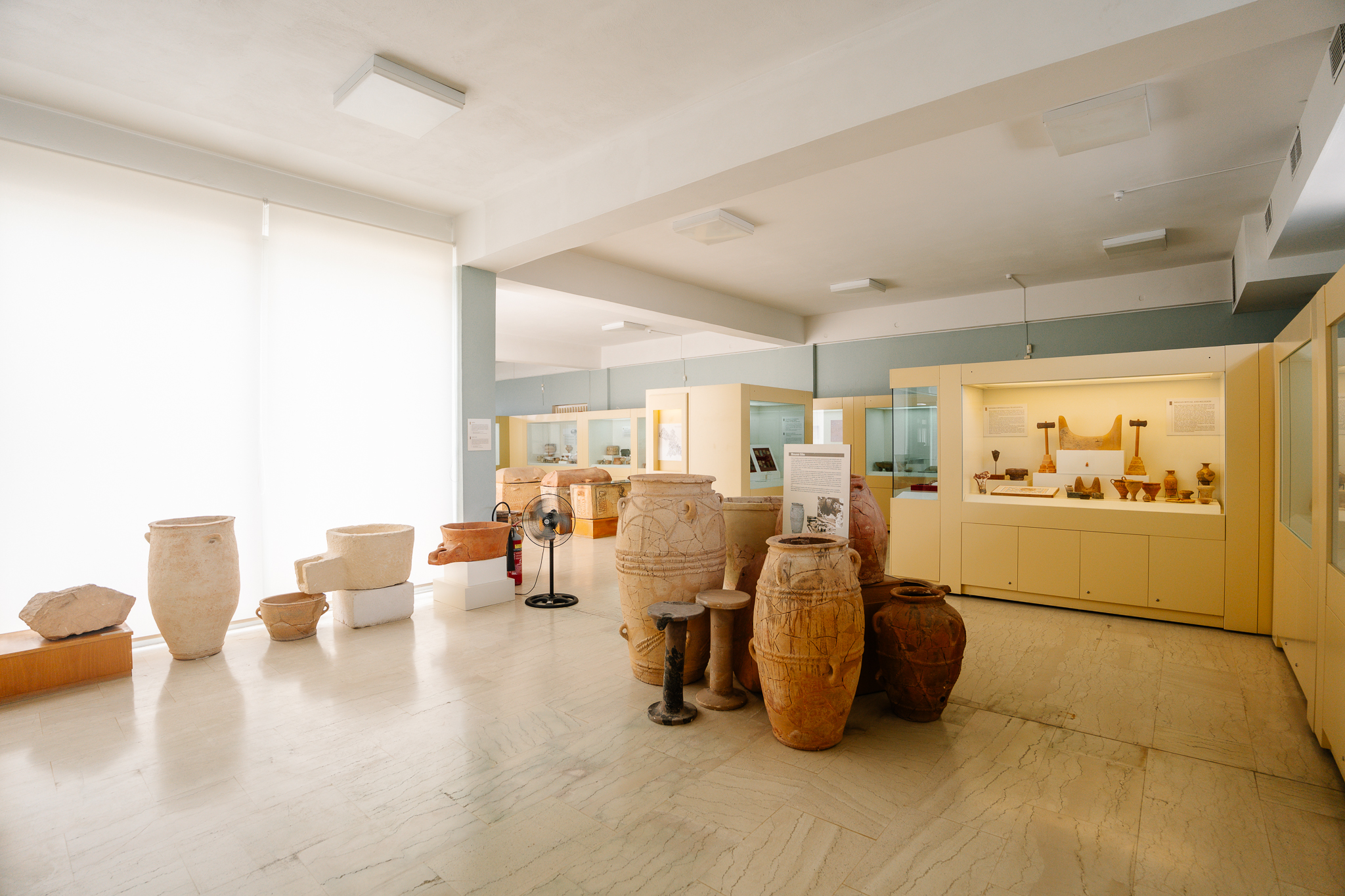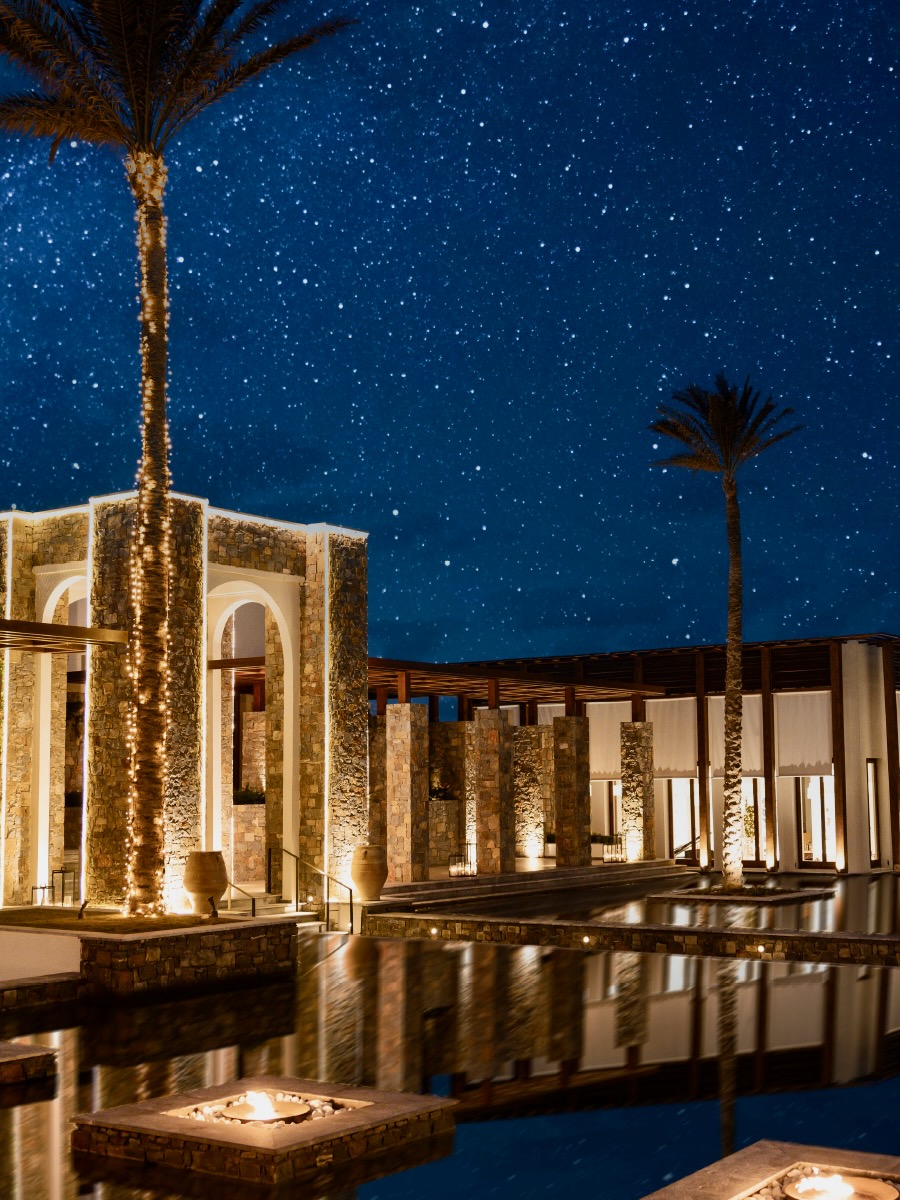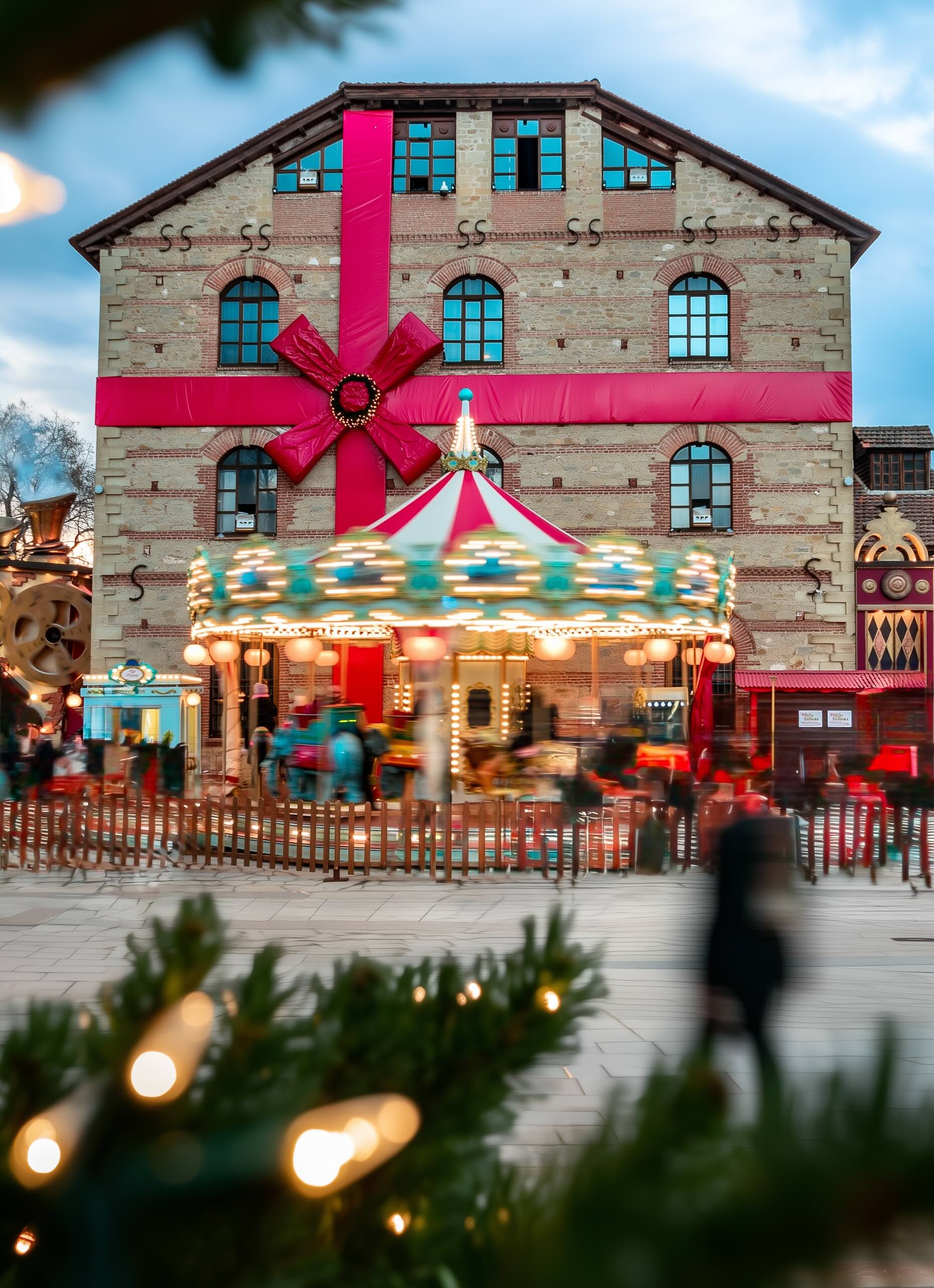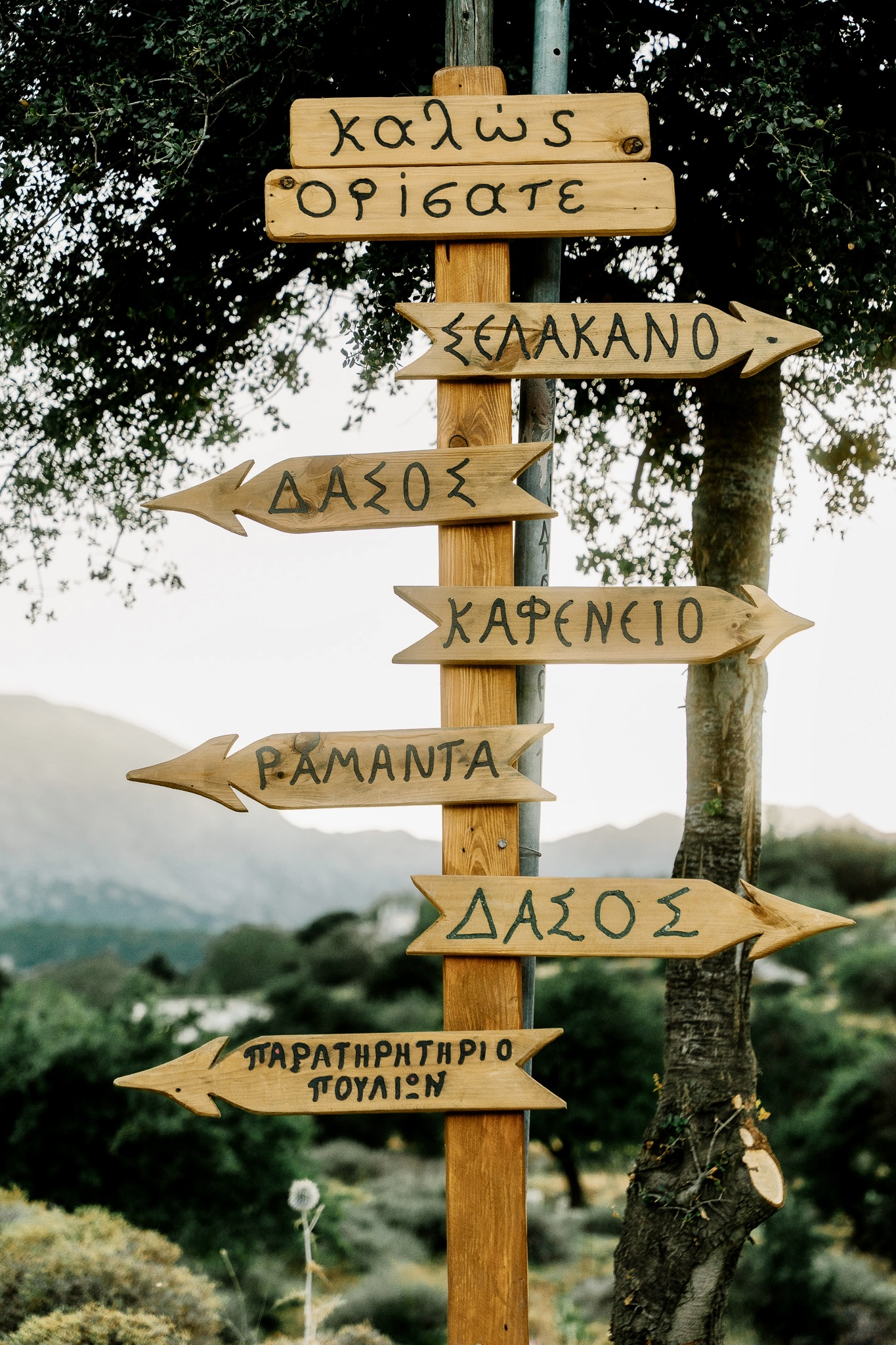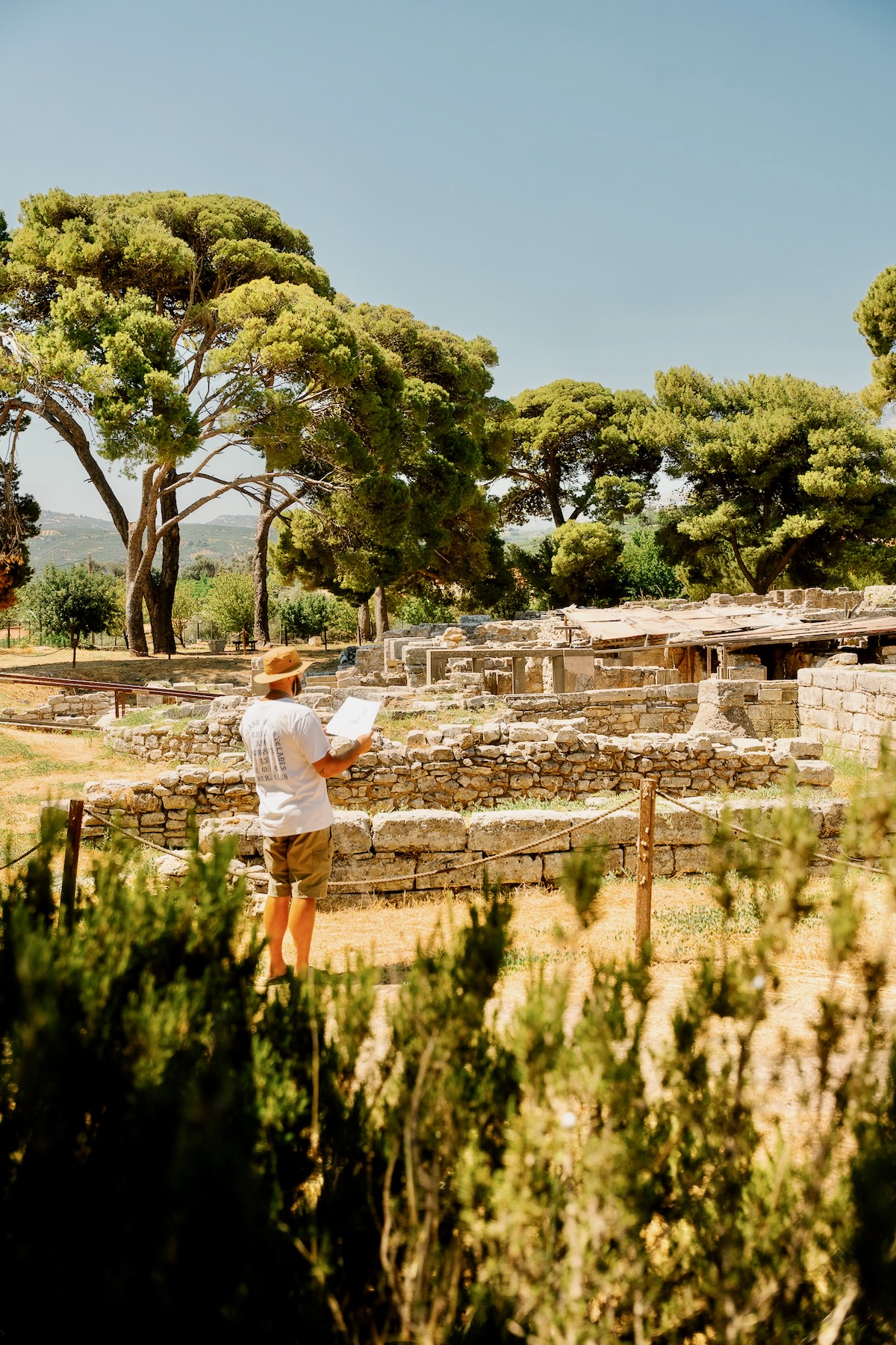At Crete’s eastern edge, a region of exceptional natural beauty and rich history served for centuries as a vital center of Minoan civilization. Some of the most significant ancient city-states flourished around Elounda lagoon and Mirabello Bay’s crystal waters. With Spinalonga island standing as one of Crete’s most famous attractions and archaeological sites of exceptional interest, Lasithi proudly displays its cultural heritage.
Archaeological Sites
Spinalonga
This world-famous islet in Elounda lagoon, Mirabello Bay, ranks among Crete’s most visited attractions. Covering approximately 85 acres, Spinalonga carries a fascinating, long history. It served as a Venetian fortress, a remarkable fortified city, a 20th-century leper colony, and a crucial communication point with Cairo during the Occupation. This beautiful small island has preserved its unique architecture through centuries, offering visitors a glimpse into a different era. Spinalonga stands as its own distinct world within our modern times.
Zakros Archaeological Site
The fourth-largest Minoan palace was built in a protected bay, serving as the main trade center with Eastern countries due to its strategic location. Archaeological research shows the first Zakros palace was constructed in 1900 BC, with a new palace built on its ruins three centuries later. Like all Minoan centers in Crete, Zakros was completely destroyed around 1450 BC. Today, visitors can explore the Minoan palace ruins and the “Gorge of the Dead,” where excavations revealed burial monuments in caves. Most archaeological findings from this site are displayed in Heraklion Museum.
Diktaean Cave
In the Dikti mountain range lies one of Crete’s most historic and impressive caves. Psychro Cave is identified as the legendary Diktaean Cave of Greek mythology, where Rhea allegedly sought refuge to give birth to Zeus, away from angry Kronos who wanted to kill the baby. Studies have revealed numerous findings indicating the cave served as a major worship center in ancient Crete for centuries. Excavations show worshippers came not only from nearby areas but from far away, proving the cave’s significance to ancient Cretans. The cave’s interior features stunning stalactites and stalagmites resembling statues, which were objects of worship during Minoan times.
Makry Gialos Minoan Villa
At Plakakia in Makry Gialos, overlooking the Libyan Sea, stands a private villa from the late Minoan period that resembles a magnificent miniature of a grand Minoan palace. Like all Minoan-era villas, the ruins reveal a central courtyard with surrounding living spaces. Studies indicate the villa’s roof was covered with reeds and clay, a common architectural method in rural Crete during that period. Evidence confirms the building was destroyed by fire.
Seli Ampelou Windmills
A large, architecturally complete complex of windmills at Seli Ampelou in the Lasithi Plateau consists of 24 preserved windmills (originally 26). Historical texts first mention their existence during Venetian rule. The mills served both Lasithi residents and people from nearby areas of the island for grain grinding.
Gournia
Known as the “Pompeii of the Minoan period,” Gournia represents the best-preserved example of a medium-sized settlement from the great Minoan peak. The ancient settlement developed on a low hill near the sea and was completely destroyed, along with its palace, around 1450 BC alongside all city-states of the Minoan Empire.
Vasiliki
Near Gournia, another Minoan settlement developed on the slopes and summit of a small hill, close to today’s Vasiliki village. Findings indicate the ancient settlement was established during the second Proto-Minoan period. The settlement achieved remarkable economic and commercial power through two key advantages: its excellent strategic position and the rich, fertile plain surrounding it that provided abundant resources.
Museums
Agios Nikolaos Archaeological Museum
The Archaeological Museum in Agios Nikolaos was built to house findings from eastern Crete that previously had to be transported to Heraklion Archaeological Museum. The permanent exhibition covers an extensive period, from the Neolithic Era to the end of the Greco-Roman period. Notable exhibits include findings from the Malia palace, with the most famous piece being the libation vessel known as “the goddess of Myrtos.”
Sitia Archaeological Museum
A century after the first Italian Archaeological School excavations, Sitia Archaeological Museum opened to the public. Since 1984, visitors can view genuine masterpieces of Minoan art, many discovered in the Kato Zakros palace. The museum’s most iconic exhibit is a chryselephantine figurine from the Minoan city of Palaikastro.
Neapolis Archaeological Collection
The Neapolis Archaeological Collection includes findings from major archaeological excavations conducted in Crete during the 20th century. The collection features important discoveries from the French Archaeological School’s 1937 excavations in Elounda, Ellinika, and Driros. It also houses numerous ancient objects discovered specifically in the Agios Nikolaos area during the Italian occupation period.



